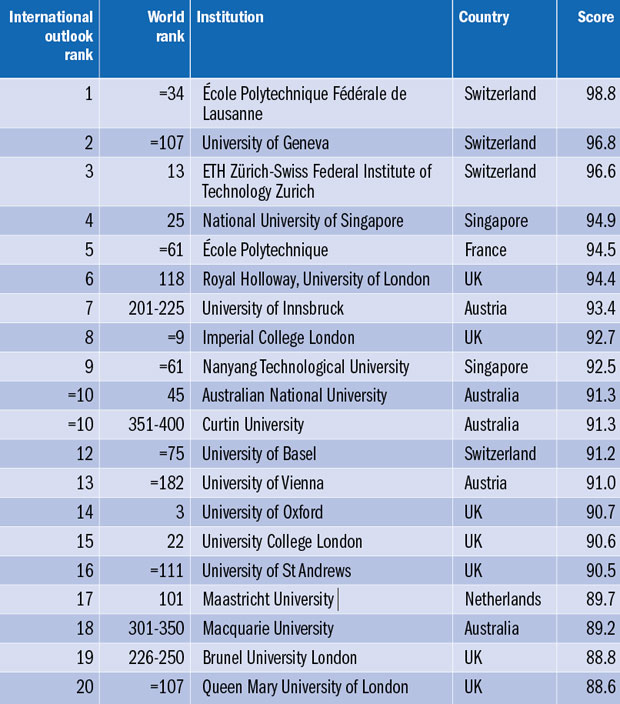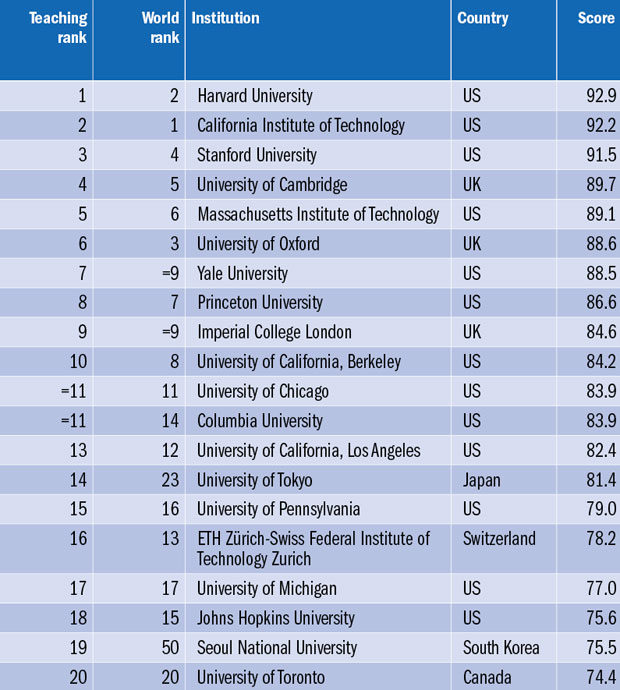Thirteen separate performance indicators are carefully balanced to provide the overall scores for the Times Higher Education World University Rankings. But while this provides a powerful and accessible picture of all-round excellence, THE is keen to ensure that the data can be unpicked to allow users to gain deeper insights into the institutions featured. After all, composite scores may sometimes mask areas of niche strength – or weakness.
Accordingly, the World University Rankings tables break down overall institutional scores into separate figures in five broad categories, covering the full range of the university’s core missions: the teaching environment; research (volume, impact and reputation); research influence (average citations per paper); international outlook (students, staff and research); and innovation (industry income). Our website allows users to create bespoke rankings based on any of these categories and provides the scores for every university featured.
Here are a couple of examples of this approach: in the tables (below), we consider the stand-out performers in our international outlook and teaching environment categories.
International outlook is based on three separate indicators: the proportion of international students at each institution; the percentage of international faculty; and the portion of internationally co-authored research papers. These elements are given a relatively low weighting in the overall tables (2.5 per cent each), but in some respects they are integral to success in the other indicators: drawing in global talent among staff and students, and ensuring that researchers are engaged with leading scholars in their fields globally, are essential ingredients for overarching success, pushing up performance in other key indicators such as academic reputation and research impact.
The top three places are taken by Swiss institutions – perhaps inevitable given the country’s geographical position, landlocked and sharing its borders with five nations: it is hard to avoid an international outlook in such a scenario.
École Polytechnique Fédérale de Lausanne takes first place, the University of Geneva second and ETH Zürich-Swiss Federal Institute of Technology Zurich third.
However, Switzerland’s strength here is not just an accident of geography but a core part of its leading universities’ personalities.
Take Geneva, for example. Situated in a city home to the highest concentration of international bodies in the world (including the World Health Organization and many United Nations agencies), it says it “envisions itself as a global institution”. Already home to students from more than 140 countries, the university has put internationalisation at the heart of its strategic plan to 2020.
The most striking aspect about the international outlook top 20 is the absence of US universities. While the American academy dominates the overall world rankings and undoubtedly has some of the most globally recognisable universities, its score in this category falls well short: perhaps a rare downside to having internationally revered universities.
The teaching environment table, which employs five indicators including global reputation for teaching and total resources, is more predictable on the face of it: indeed, the top 10 universities are the same institutions found at the overall summit, with a slight reshuffling of position.
Notable is the success of Asian institutions: ranked 23rd in the overarching table, Japan’s University of Tokyo takes 14th place for teaching, and South Korea’s Seoul National University is 19th here but 50th overall. This indicates just how seriously the rising Asian stars are taking pedagogy.
Phil Baty is editor, Times Higher Education Rankings.


